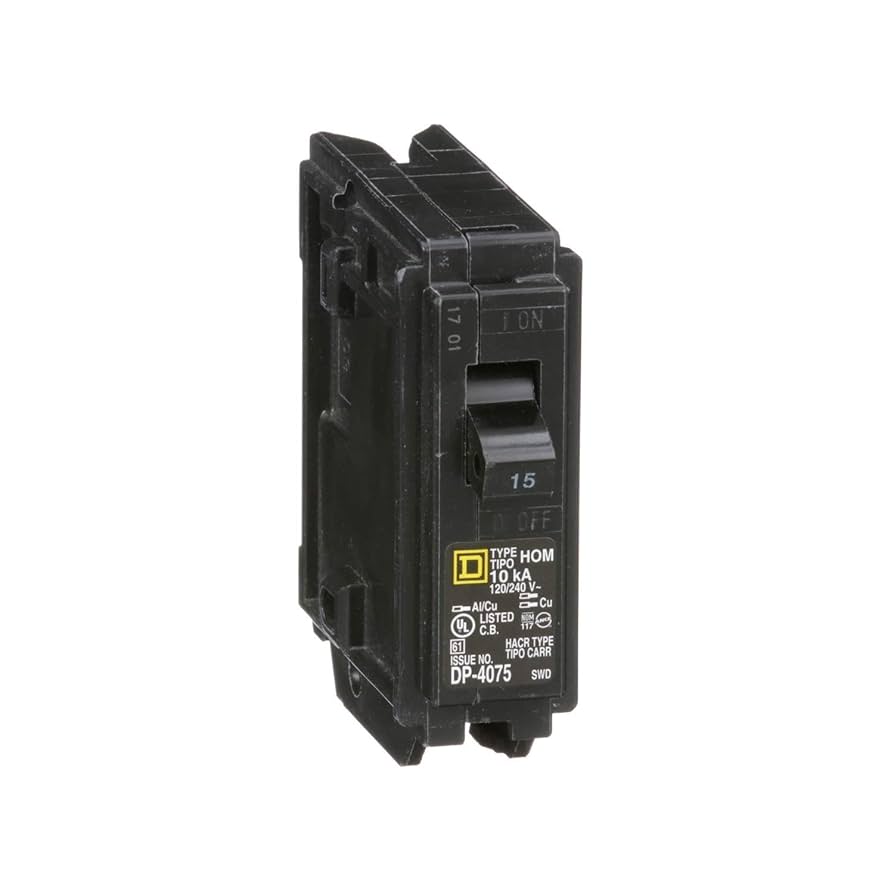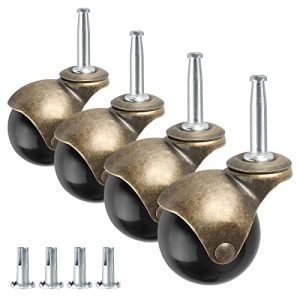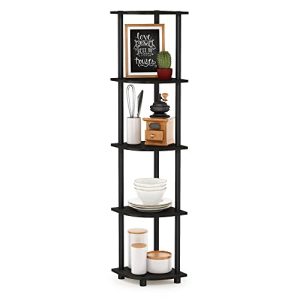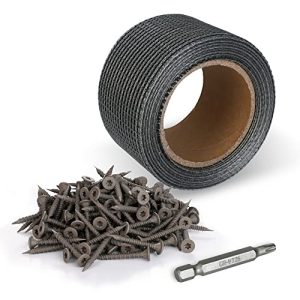Are you planning a home renovation or simply looking to understand your electrical system better? You might have come across the term “15 Amp Circuit Breaker.”
But what does it really mean for you and your home? In a world where safety and efficiency are paramount, knowing the ins and outs of your circuit breakers can make all the difference. Imagine having the confidence to protect your appliances, prevent potential hazards, and ensure a seamless flow of power throughout your home.
Intrigued? Stick around to uncover everything you need to know about 15 Amp Circuit Breakers and how they play a crucial role in your daily life.
What Is A 15 Amp Circuit Breaker
A 15 amp circuit breaker is a common electrical safety device found in many homes and buildings. Its main role is to protect your wiring and appliances from damage caused by too much current flowing through the circuit. Understanding what this breaker does can help you maintain a safer and more efficient electrical system.
What Does A 15 Amp Circuit Breaker Do?
A 15 amp circuit breaker automatically shuts off electricity when the current exceeds 15 amps. This prevents overheating and potential fires by stopping excessive electrical flow. Think of it as a safety guard that trips when your circuit is overloaded.
Where Are 15 Amp Circuit Breakers Used?
These breakers are often used for lighting circuits, outlets, and small appliances. For example, many kitchen outlets and living room circuits are protected by 15 amp breakers. This size strikes a balance between allowing enough power and preventing damage from too much current.
How Does A 15 Amp Circuit Breaker Work?
Inside the breaker, a metal strip or coil heats up when current passes through. If the current goes beyond 15 amps, the heat causes the strip to bend or the coil to trip, cutting off the electrical flow. This quick response helps avoid dangerous situations before they get worse.
Why Choose A 15 Amp Circuit Breaker?
Choosing the right breaker depends on your electrical needs. A 15 amp breaker is ideal for everyday household circuits that don’t require heavy power. Using one helps ensure your wiring stays safe without unnecessary power interruptions.
Signs You Might Need To Check Your 15 Amp Breaker
- Frequent tripping of the breaker during normal use
- Flickering lights or power loss in certain outlets
- Warm or burning smell near your breaker panel
Have you noticed any of these signs? It might be time to inspect or replace your breaker to keep your home safe.
How 15 Amp Breakers Work
A 15 amp circuit breaker protects electrical circuits from damage. It stops the flow of electricity if the current exceeds 15 amps. This prevents overheating and potential fires.
The breaker works by detecting excess current and quickly breaking the circuit. It resets easily after tripping, allowing safe restoration of power.
Basic Components Of A 15 Amp Circuit Breaker
- Switch Lever: Manually turns the breaker on or off.
- Bimetallic Strip: Bends when heated by excess current.
- Electromagnet: Creates a magnetic field proportional to current flow.
- Trip Mechanism: Releases the switch lever to break the circuit.
How The Breaker Detects Overcurrent
The breaker senses two types of overcurrent: overload and short circuit.
- Overload: Small excess current heats the bimetallic strip.
- Short Circuit: Large current quickly activates the electromagnet.
The Tripping Process
Heat or magnetic force triggers the trip mechanism. The switch lever flips to the off position. This breaks the electrical circuit and stops current flow.
Resetting The Breaker
After fixing the issue, push the switch lever back on. The breaker reconnects the circuit safely. This restores power without replacing any parts.
Common Uses For 15 Amp Breakers
15 amp circuit breakers are a staple in many home electrical systems. They protect wiring and devices by stopping the flow of electricity when there’s an overload or short circuit. Understanding where these breakers are commonly used helps you maintain safety and efficiency in your electrical setup.
Kitchen Appliances
Many kitchen appliances like microwaves, toasters, and coffee makers run smoothly on 15 amp breakers. These breakers handle the moderate power needs without tripping frequently. Have you noticed how your toaster sometimes trips the breaker? It might be sharing a circuit with other appliances, making a dedicated 15 amp breaker essential.
Lighting Circuits
Lighting is one of the most common uses for 15 amp breakers. They provide enough capacity for several light fixtures or lamps on the same circuit. This setup keeps your lights safe from electrical faults while preventing unnecessary power cuts.
Outlet Circuits In Living Areas
Living rooms and bedrooms often have outlets wired on 15 amp breakers. These breakers support everyday devices like TVs, chargers, and laptops. Keeping these circuits on 15 amps balances safety with the typical power demands of your electronics.
Bathroom Electrical Devices
Small bathroom appliances such as hair dryers and electric razors usually operate on 15 amp circuits. Since bathrooms have moisture, the breaker adds an extra layer of safety. Do you check if your bathroom outlets are protected by the right breaker? It’s a simple step that can prevent electrical hazards.
Home Office Equipment
With more people working from home, 15 amp breakers are crucial for home office setups. They support computers, printers, and desk lamps effectively. Ensuring these devices run on proper breakers helps avoid unexpected power outages during important work.
Choosing The Right Circuit Breaker
Choosing the right circuit breaker is essential for electrical safety and efficiency. The breaker must match the needs of the electrical circuit and protect wiring from damage. Using the correct breaker prevents overheating and fire risks. This section explains how to select a 15-amp circuit breaker properly.
Matching Breaker to Circuit
The breaker rating should fit the circuit’s electrical load. A 15 amp breaker works best for circuits with devices drawing up to 15 amps. Overloading the breaker leads to frequent trips. Undersized breakers may cause nuisance shutdowns. Always select a breaker with the right capacity for the connected devices.
Considering Wire Gauge
Wire size determines the maximum safe current flow. For a 15 amp breaker, use 14-gauge wire as standard. Thicker wire handles more current safely. Using thinner wire with a 15 amp breaker risks overheating. Check wire gauge before installing the breaker to ensure safety and code compliance.
Types Of 15 Amp Breakers
- Standard Circuit Breakers: Protect general household circuits.
- GFCI Breakers: Provide ground fault protection near water sources.
- AFCI Breakers: Detect arc faults to prevent electrical fires.
Choose the breaker type based on the circuit location and purpose. Each type offers specific protection features for different needs.
Installation Tips For Safety
Installing a 15 Amp circuit breaker correctly is crucial for your home’s electrical safety. Mistakes during installation can lead to serious hazards, including electrical fires or equipment damage. Paying close attention to each step and using the right tools ensures the breaker functions as intended and keeps your household protected.
Tools Needed
- Voltage tester– to confirm power is off before you start.
- Flathead and Phillips screwdrivers– for panel cover and breaker screws.
- Wire strippers– to prepare wires for connection without damage.
- Needle-nose pliers– for precise wire bending and placement.
- Flashlight– useful if your work area has limited lighting.
Having these tools at hand can save you time and prevent frustration. Missing even one tool could cause you to rush or make errors.
Step-by-step Installation
- Turn off the main power supply to ensure no electricity flows through the panel.
- Remove the panel cover carefully, keeping screws in a safe spot.
- Use a voltage tester to double-check that the panel is not live.
- Locate the slot for your new 15 Amp breaker and prepare the circuit wire by stripping about half an inch of insulation.
- Attach the wire securely to the breaker terminal, making sure the connection is tight but not over-tightened.
- Snap the breaker into the designated slot firmly until it clicks into place.
- Replace the panel cover and tighten screws securely.
- Turn the main power back on and test your new breaker by switching it on and off.
Have you ever skipped double-checking the power status? It’s a risky oversight that can cause injury or damage. Taking your time here is non-negotiable.
Safety Precautions
- Always wear insulated gloves to protect against accidental shocks.
- Stand on a dry, insulated surface while working on the breaker panel.
- Never touch any other wires or terminals except the one you are working on.
- Keep your workspace clear of clutter to avoid tripping or accidental contact with tools.
- If unsure about any step, consult a licensed electrician rather than guessing.
Electrical work is unforgiving of shortcuts. Have you considered how a small mistake could affect your entire home’s safety? Respecting these precautions isn’t about fear; it’s about responsibility for your safety and your family’s.
Signs Of A Faulty 15 Amp Breaker
A 15 amp circuit breaker protects your home’s electrical system from damage. It stops the flow of electricity if there is too much current. A faulty breaker can cause serious safety issues. Knowing the signs of a bad breaker helps prevent accidents and costly repairs.
Watch for unusual signs that the breaker is not working right. Early detection keeps your electrical system safe and efficient.
Frequent Tripping Of The Breaker
The breaker trips more often than usual without heavy electrical use. This means it might be weak or damaged. Frequent trips interrupt power and signal a problem inside the breaker.
Breaker Feels Warm Or Hot
A breaker should stay cool during normal use. Warm or hot breakers show internal damage or overload. This heat could lead to failure or fire risk.
Visible Damage Or Burn Marks
Look for cracks, burn marks, or discoloration on the breaker. These signs show it has overheated or short-circuited. Damaged breakers must be replaced quickly to avoid danger.
Breaker Won’t Reset
If the breaker trips and does not reset, it is likely faulty. A breaker that refuses to stay on cannot protect the circuit properly. This needs immediate attention.
Buzzing Or Crackling Sounds
Unusual noises near the breaker panel are a warning sign. Buzzing or crackling sounds indicate loose connections or internal faults. These sounds should never be ignored.
Electric Shocks Or Sparks
Feeling a shock or seeing sparks near the breaker is very dangerous. It points to serious electrical issues and a failing breaker. Turn off power and call an electrician right away.
Maintaining Your Circuit Breaker
Maintaining your 15 Amp circuit breaker is essential for electrical safety and performance. Regular care helps prevent power failures and electrical hazards. Simple steps can extend the life of your circuit breaker and keep your home safe.
Regular Testing
Test your circuit breaker every few months to ensure it works properly. Turn off the breaker switch and then turn it back on. This action helps keep the internal parts moving freely. Testing also confirms the breaker trips correctly under overload conditions. If the breaker does not reset or trips too easily, it may need professional attention.
Cleaning And Inspection
Keep the breaker panel clean and free of dust. Dust and dirt can cause poor connections or overheating. Use a dry cloth or a soft brush to clean around the breaker. Avoid using water or liquid cleaners. Check for any signs of damage, such as burn marks or loose wires. Tighten any loose screws to secure the breaker firmly in place.
When To Replace
Replace your circuit breaker if it frequently trips without reason. A breaker that feels warm or hot to touch needs replacement. Also, if the breaker fails to reset after tripping, it is time for a new one. Old breakers may not protect your home effectively. Consult a licensed electrician to ensure safe and proper replacement.
Common Problems And Fixes
Dealing with issues in your 15 Amp circuit breaker can be frustrating, but understanding common problems helps you fix them faster. These breakers are designed to protect your home’s electrical system, so when something goes wrong, it’s important to act quickly. Let’s look at some typical problems and practical ways to solve them.
Frequent Trips
If your 15 Amp breaker trips often, it’s usually a sign of overload or a short circuit. Think about how many devices you have plugged into that circuit—too many high-power appliances can cause it to trip repeatedly.
Try unplugging some devices and see if the breaker stays on. If it does, you know the load was too high. Sometimes, a faulty appliance or damaged wiring can also cause trips, so inspect cords and outlets carefully.
Breaker Won’t Reset
When your breaker won’t reset, it can be alarming. This often means there’s a persistent fault in the circuit preventing it from safely turning back on.
Start by turning off all devices on that circuit before attempting to reset. If it still won’t reset, check for visible signs of damage like burnt outlets or melted wires. In some cases, the breaker itself may be faulty and need replacement.
Overheating Issues
Overheating breakers are dangerous and should never be ignored. If your breaker feels hot to the touch, it could be due to loose connections or an overloaded circuit.
Make sure all wiring connections are tight and inspect the breaker panel for signs of corrosion or damage. Overheating can also mean the breaker is aging and may require replacement to avoid electrical hazards.
Upgrading Electrical Panels
Upgrading electrical panels is a key step to ensure your home’s electrical system can safely handle modern power demands. If you’ve noticed frequent breaker trips or flickering lights, your panel might be outdated. Upgrading helps accommodate new appliances and improves overall safety.
Why Upgrade Your Electrical Panel?
Older panels often lack the capacity for today’s technology and appliances. You might still have a 60-amp panel when modern homes typically require 100 amps or more. Upgrading prevents overloads that can cause breakers to trip or even electrical fires.
Think about your daily electricity use. Do you run multiple devices at once? If so, your panel needs to keep up with that load. Upgrading gives you peace of mind and reduces interruptions.
Choosing The Right Circuit Breaker Capacity
A 15 amp circuit breaker is common for lighting circuits and small appliances. But your panel must support the total load of all breakers combined. If you add more 15 amp breakers without upgrading, you risk overloading the system.
Match breaker capacity to the circuits they protect. For example, kitchen appliances may need 20 amps, while lighting can stay on 15 amps. A professional can help calculate your home’s total demand to size the panel correctly.
Signs Your Electrical Panel Needs Upgrading
- Frequent breaker trips during normal use
- Flickering or dimming lights when appliances turn on
- Burning smell or scorch marks near the panel
- Use of outdated fuse boxes instead of circuit breakers
- Adding new appliances triggers electrical issues
Ignoring these signs can lead to bigger problems. If you spot any of these, consider upgrading before it becomes a hazard.
What To Expect During An Upgrade
Upgrading usually takes a few hours to a day, depending on your home size. The electrician will replace the old panel with a new one that supports more circuits and higher capacity.
You may need to schedule a power outage during the work, so plan accordingly. Once done, your home will handle electricity more efficiently and safely.

Credit: evolt.ca
Safety Tips For Electrical Use
Handling electrical systems safely is crucial to prevent accidents and damage. A 15 Amp circuit breaker plays a key role in protecting your home or workplace from electrical overloads. Understanding how to use and maintain it safely can save you from costly repairs and dangerous situations.
Understanding Your Circuit Breaker’s Limits
Every circuit breaker has a specific capacity, and for a 15 Amp breaker, that limit is 15 amps. Exceeding this can cause it to trip, cutting power to prevent overheating. Do you know what devices or appliances you have plugged into a single circuit? Avoid plugging too many high-power devices into one breaker to prevent overloads.
Regular Inspection And Maintenance
Check your 15 Amp circuit breakers periodically. Look for signs of wear, damage, or corrosion on the breaker and surrounding wiring. If a breaker trips frequently without a clear cause, it might be failing and needs professional attention.
Proper Installation And Replacement
Only use breakers rated for your electrical panel and wiring. Installing a breaker with a higher rating than your circuit can handle is dangerous and voids safety protections. If you ever replace a breaker, ensure it’s done by a qualified electrician who understands your system’s requirements.
Safe Practices When Using Electrical Devices
Unplug devices when not in use to reduce electrical load and prevent potential hazards. Avoid using damaged cords or extension cables on circuits protected by a 15 Amp breaker. Have you ever experienced flickering lights or frequent breaker trips? These signs mean you should reduce the load or check for faults immediately.
Emergency Response and Troubleshooting
If your 15 Amp circuit breaker trips, don’t ignore it. Turn off or unplug devices on that circuit and reset the breaker. If it trips again quickly, call a professional instead of repeatedly resetting it yourself. Your safety depends on identifying the root cause, not just restoring power.

Credit: www.amazon.ca
Frequently Asked Questions
What Is A 15 Amp Circuit Breaker Used For?
A 15 amp circuit breaker protects electrical circuits from overload. It is commonly used in lighting and outlet circuits in homes. It prevents overheating and potential fires by interrupting power flow when current exceeds 15 amps.
How Does A 15 Amp Circuit Breaker Work?
A 15 amp circuit breaker trips when current exceeds 15 amps. It uses a bimetallic strip or electromagnet to detect overload. When tripped, it cuts off electricity, protecting wiring and devices from damage.
Can I Replace A 20 Amp Breaker With 15 Amp?
Replacing a 20 amp breaker with 15 amp is not recommended. It may cause frequent trips due to lower current capacity. Always match the breaker rating to the circuit’s wire gauge and load requirements.
What Wire Size Is Needed For A 15 Amp Circuit?
For a 15 amp circuit, use 14-gauge wire. This wire size safely handles up to 15 amps without overheating. Using smaller wire risks fire hazards and code violations.
Conclusion
A 15 amp circuit breaker protects your home from electrical problems. It stops too much current from flowing. This helps prevent fires and damage to devices. Choosing the right breaker keeps your wiring safe. Always follow safety rules when working with electricity.
Understanding how this breaker works saves money and worry. Trust it to keep your electrical system steady and secure. Simple, reliable protection for everyday electrical needs.








